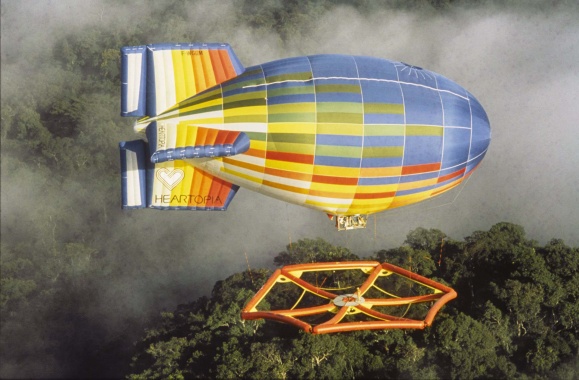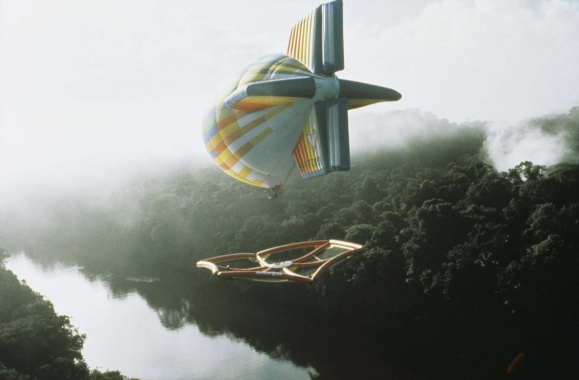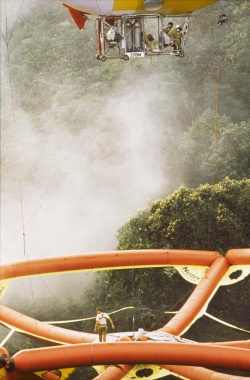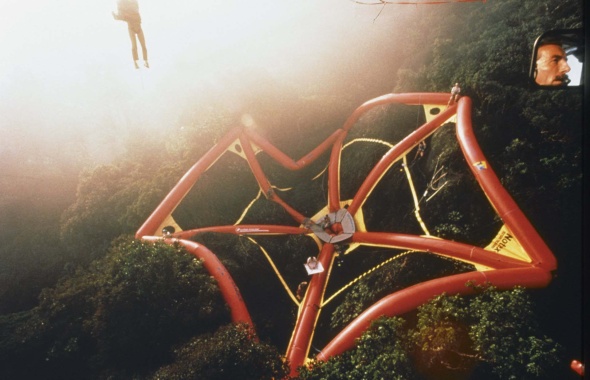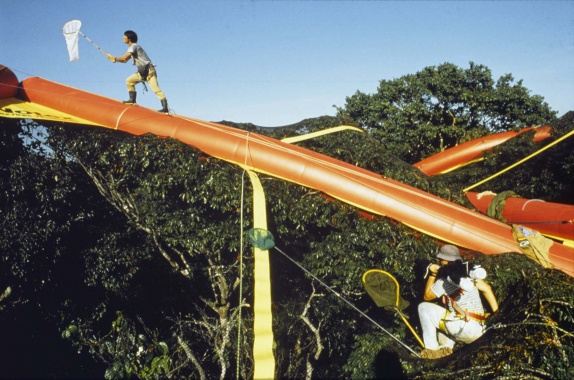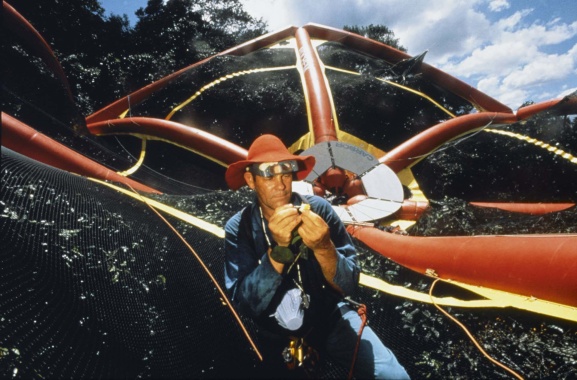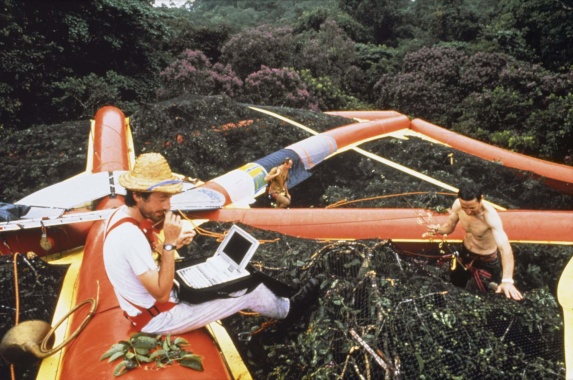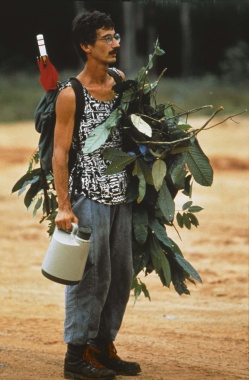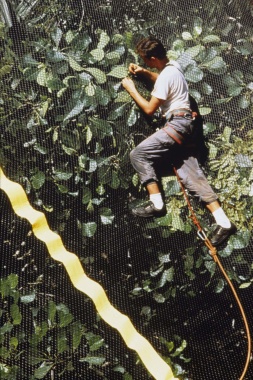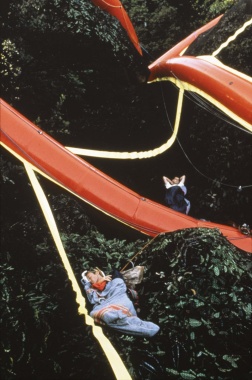Raphaël Gaillarde – Canopy Raft, 1990
For the tenth edition of the Leica Oskar Barnack Awards in 1990, the jury selected an unusual series dedicated to a project being carried out in the Amazon rainforest. At lofty heights, the French photographer Raphaël Gaillarde documented an extraordinary research operation taking place in the treetops.
It was not only the photographer’s images that were astounding; the adjective applies even more to the structure that floated above the tropical rainforest in French Guiana. Gaillarde accompanied a group of researchers in the French overseas department, located in the north of South America, between Brazil and Suriname. Exceptional planning was needed to prepare for the trip: the architect Gilles Ebersolt and aerostat pilot Dany Cleyet-Marrel developed an inflatable raft construction, based on an idea initiated by the renowned botanist and biologist Francis Hallé.
This mobile scientific laboratory was transported into areas of the Amazon that had formerly been inaccessible. With the help of a hot air dirigible, the pneumatic hexagonal structure, consisting of rubber pontoons and nets, was placed above the rainforest treetops. The “Canopy Raft” had a diameter of 26 metres, offering a group of scientists enough room to study up close the diversity of life forms in the rainforest canopy. The researchers were able to live and work independently on the inflatable platform for some time. The construction had enough room for all the scientific equipment, allowing direct research into the rainforest living environment. At night, it offered enough safety for all those involved.
“The task of this team of researchers was to explore the rainforest, and contribute to its preservation in the face of environmental dangers and destruction at the hands of man.”
The photo series was made up of ten colour photographs. In addition to coming in second at the World Press Photo in the Science and Technology category, it convinced the LOBA jury at the time, as Gaillarde’s series truly fulfilled the LOBA photo award’s guiding principle of “reflecting the relationship of humankind to its environment in a positive way”.
The photographer was working at the time for the French Gamma Agency. He accompanied the flight over the rainforest, documenting the way the raft landed and how the researchers worked, anchored to the canopy. A number of international experts were involved in studying the insects, birds, tree frogs and vegetation. Consequently, there are pictures showing how insects were caught in butterfly nets; how plant samples were examined and recorded right on location; but also how the researchers managed to rest in their sleeping bags.
Systematic research of the rainforest was still in its early days. The Leica Oskar Barnack Award’s press release reported at the time: “The task of this team of researchers was to explore the rainforest, and contribute to its preservation in the face of environmental dangers and destruction at the hands of man.” Given today’s perspectives, where the ecological significance of the rainforest has long since been recognised, and working against its dramatic disappearance is one of our greatest socio-political challenges, the LOBA series from 1990 takes on a special visionary role.
(Text written in 2020)
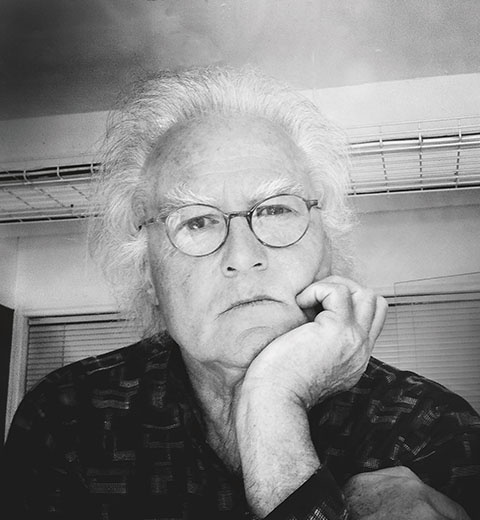
Raphaël Gaillarde
The French photojournalist was born in 1940. His first publications were in the field of fashion photography. His career as a press and magazine photographer began in 1979 with the Gamma Agency, where he worked for 30 years, including when it became the Gamma-Rapho Agency. He has been published in renowned international magazines, and is also a book author. Gaillarde is a four-time recipient of a World Press Photo Award (1984, 1990, 1991 and 2000). In the year 2000, he received the Visa d’or at the Photojournalism Festival in Perpignan.
